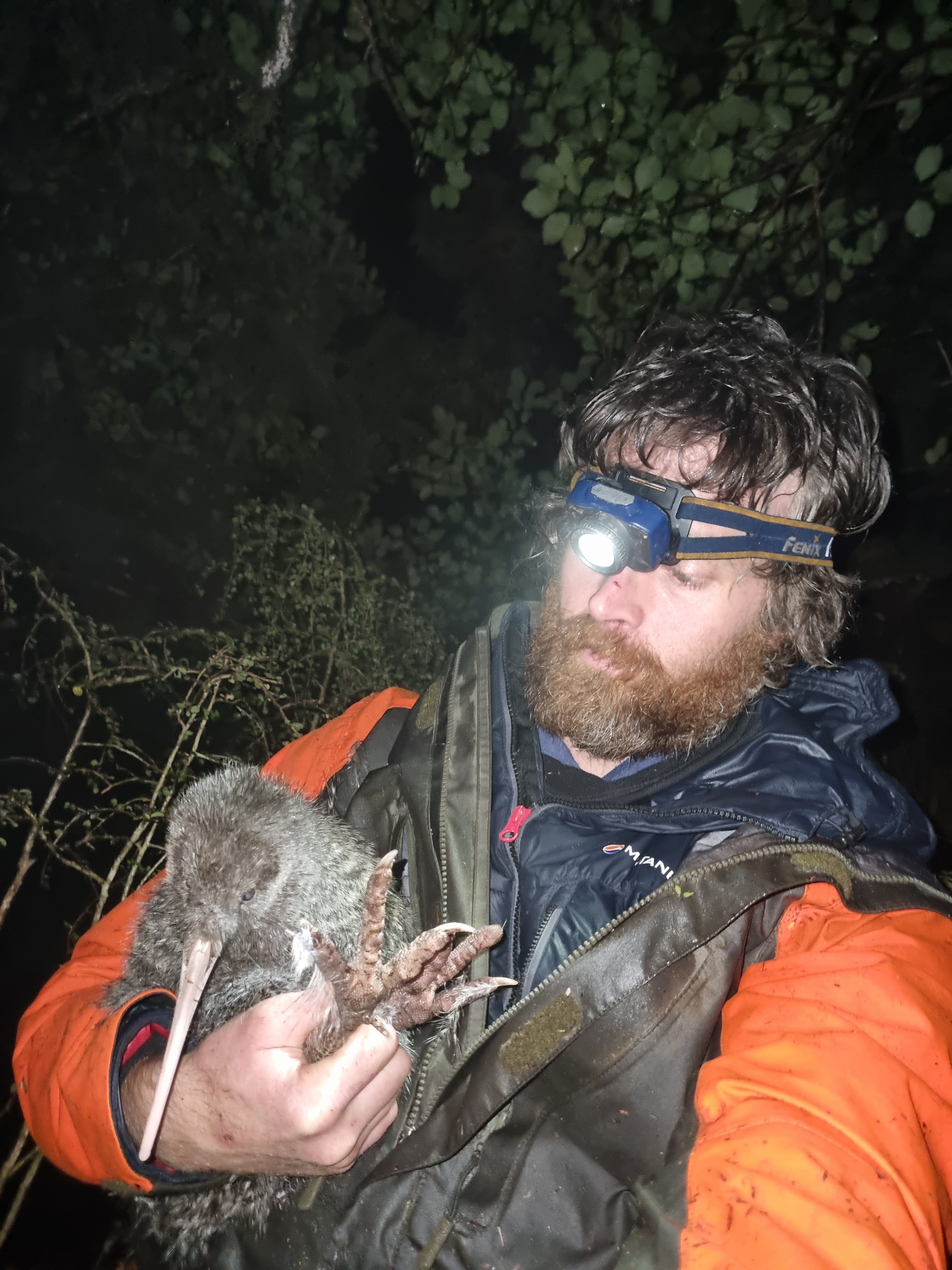The kiwi pukupuku was first seen in March this year by a tahr hunter contracted by the Department of Conservation in the remote Adams Wilderness Area on the West Coast.
Doc biodiversity ranger Iain Graham and his conservation dog Brew were flown in to locate the bird.
“I heard kiwi calling the first night - two of them duetting - and immediately knew they didn’t sound like other kiwi. It was exciting, but it took a few days to narrow down the area,” Mr Graham says.

Mr Graham and Brew are part of Doc's Air New Zealand supported Conservation Dogs programme which mentors, certifies and supports dog-handler teams to detect protected species or unwanted pests.
Mr Graham said the trip was a bit of a rollercoaster.
“We were in rough terrain, in typical West Coast weather, and I was running out of dry clothes. Brew would find a burrow, but I couldn’t get to the bird. We were so frustratingly close.
“I was stoked when we finally caught up with the female on our final night, the absolute last chance before getting flown out.”
Tiny feathers were collected from the small spotted kiwi to confirm what he suspected - the bird was a kiwi pukupuku.

The smallest of the species, they are extremely vulnerable to introduced predators. Until now it was believed they only survived in offshore islands and fenced predator-free sites.
An estimated 2000 of the threatened birds remain, though the population is increasing thanks to the conservation efforts of community groups, agencies and tangata whenua.
Kara Edwards, of Kāti Māhaki ki Makaawhio, said find was an opportunity for hapū to connect with what had been considered a lost taonga, or treasure.
“Knowing kiwi pukupuku have survived this whole time in our takiwā is incredible. We are extremely excited and looking forward to working with Doc to secure the future of kiwi pukupuku.”
Kiwi Recovery Group leader Emily King says the discovery of kiwi pukupuku on the mainland after all this time is almost miraculous.
“The last known sighting of a kiwi pukupuku on the mainland was in 1978. Despite years of targeted searching, we hadn’t found them - until now.
“We’re grateful to the hunter for reporting this and capturing evidence. It was like finding a needle in a haystack, but he pointed us to the right patch to start searching.
“Kiwi pukupuku are one of those unique species which make Aotearoa/New Zealand so special. I’m not sure how to express how thrilling this rediscovery is for the conservation world!”

“We’ll wait for genetic analysis to confirm, but the measurements look right for a kiwi pukupuku,” he said.
“We are gathering information so we can work with Kāti Māhaki ki Makaawhio to explore the future protection and management of these birds.”
Kiwi pukupuku were thought to be extinct from the wild on mainland New Zealand. It was believed all of the remaining birds were in predator-free fenced sanctuaries and offshore islands, all of which were descendants of an insurance population of just five birds translocated to Kapiti Island from South Westland in 1912.
- APL












